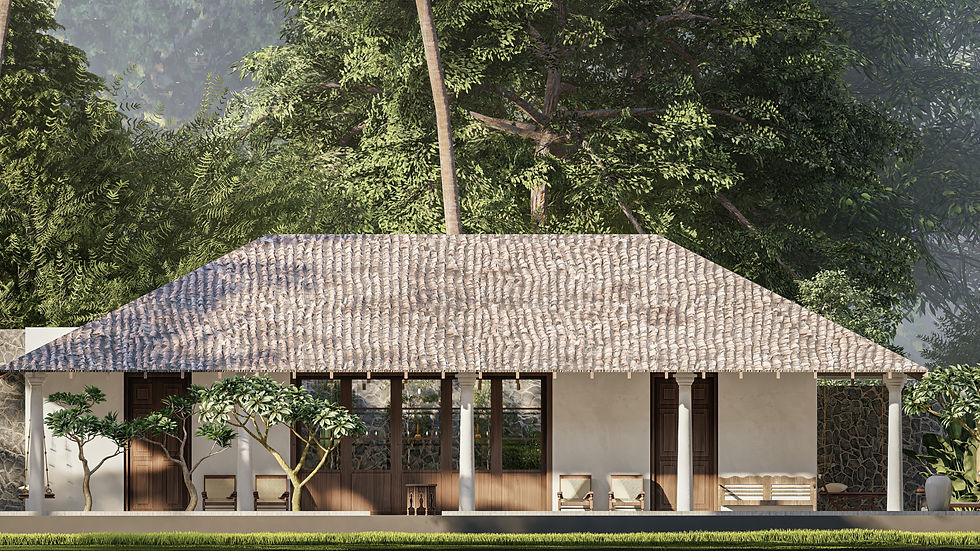The joy and challenges of implementing LEED practices on a restoration project in Sri Lanka
- Violaine

- Feb 9, 2024
- 2 min read
Updated: Feb 25
Renovating the old local farm we purchased in Sri Lanka was not just about restoring its charm; it was also an opportunity to embrace sustainability and environmental leading practices. Considering LEED (Leadership in Energy and Environmental Design) standards and requirements can guide you though such a transformation, ensuring that the farm becomes a model of eco-friendly design and operation.
First you will assess the existing structure: Evaluate its energy usage, water consumption, indoor air quality, and overall environmental impact. Understanding the farm's current state will help identify areas for improvement and establish goals for sustainability.
The you keep LEED principles in mind while designing the renovation works: Understanding of the farm's environmental footprint, the next step is to design the renovation project with LEED principles in mind. This involves incorporating energy-efficient lighting and appliances, water-saving and capturing fixtures, natural ventilation, and sustainable materials. Considering natural light and optimising the building's orientation can further enhance its energy performance.
Now let's talk about addressing challenges: While implementing LEED standards in Sri Lanka may offer numerous benefits, it also comes with its own set of challenges: sourcing sustainable materials locally, ensuring compliance with local regulations and building codes, debunking local best practices to provide LEED alternatives. Overcoming these challenges requires careful planning, collaboration with local suppliers and authorities, and creative problem-solving (a lot !!!).
When the project is complete, seeking and obtaining LEED certification is a testimony of all the efforts: This involves submitting documentation that demonstrates compliance with LEED standards across various categories, such as sustainable site development, water efficiency, energy performance, materials selection, and indoor environmental quality. Achieving LEED certification not only validates the commitment to sustainability but also provides tangible benefits such as cost savings and market recognition.

The ecological network around the resort includes abandoned paddy fields and a forest that extends to the nearby wildlife conservation sanctuary. Photo credit: Jetwing Hotels Ltd.
In conclusion by carefully planning the renovation process, addressing challenges, and seeking LEED certification, we can transform an old local farm into a model of green design and create a more sustainable living environment.




Comments